18 Wild Animals in Maldives [Wildlife in Maldives]
Want to know more about the wildlife in Maldives?
Discover 18 wild animals in Maldives in this post, as well as interesting facts about them. 🇲🇻
Learn All About Maldivian Animals
Ready to learn all about Maldivian animals?
I’ve always been fascinated by animals, and by how they can be so different from one country to another. In this guide, we’ll focus on the many animals Maldives has on the land, in the sky, and underwater.
I’ve split the guide into 6 categories:
- Native animals from Maldives
- Endangered animals of Maldives
- What is the national animal of Maldives?
- How many animals native to Maldives?
- Are there snakes in Maldives?
- Why are there no dogs in Maldives?
Let’s dive in right away with our first category!
Native Animals from Maldives
The Maldives is an archipelagic Asian country located in the southern part of the continent, off the coast of India. It is the smallest country in all of Asia, is the second least populous Asian country, and used to be a British colony. It is surrounded by the Indian Ocean, and its capital and largest city is Malé, which counts more than 133,000 inhabitants (but more than 252,000 if you include the metropolitan area).
An interesting part of the country that I wanted to tackle is its wildlife. In light of that, I have listed the best of it, and I hope you will love learning what animals live in Maldives.
Here’s the Maldives animals list.
1. Indian Ocean oriental sweetlips
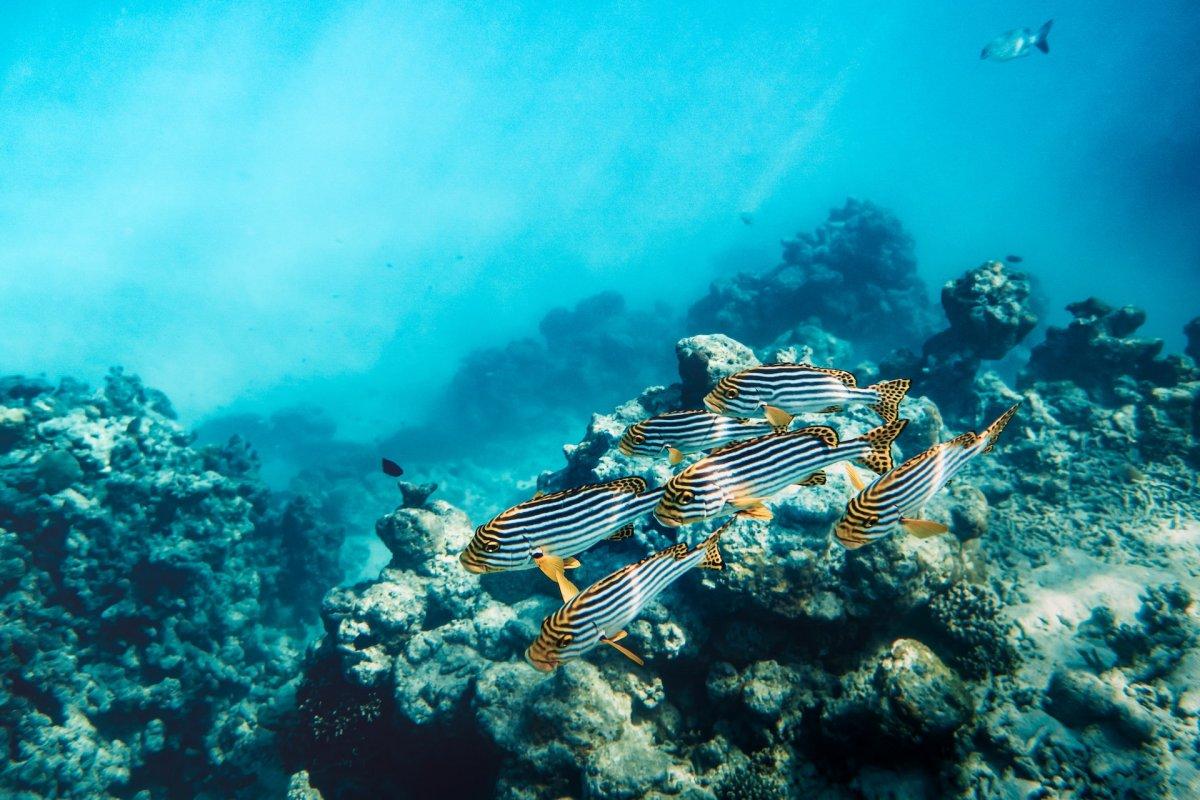
- Name: Indian Ocean oriental sweetlips
- Scientific name: Plectorhinchus vittatus
- Conservation status:
The Indian Ocean oriental sweetlips, also known as the oriental blubber lips or the oriental sweetlips, is a species of ray-finned fish native to the Indian Ocean and the western parts of the Pacific Ocean.
This fish gets its name from its fleshy lips which become swollen as it grows older. Despite its beautiful appearance, the Indian Ocean oriental sweetlips are not part of the aquarium trade but are often fished and sold fresh.
2. Indian flying fox
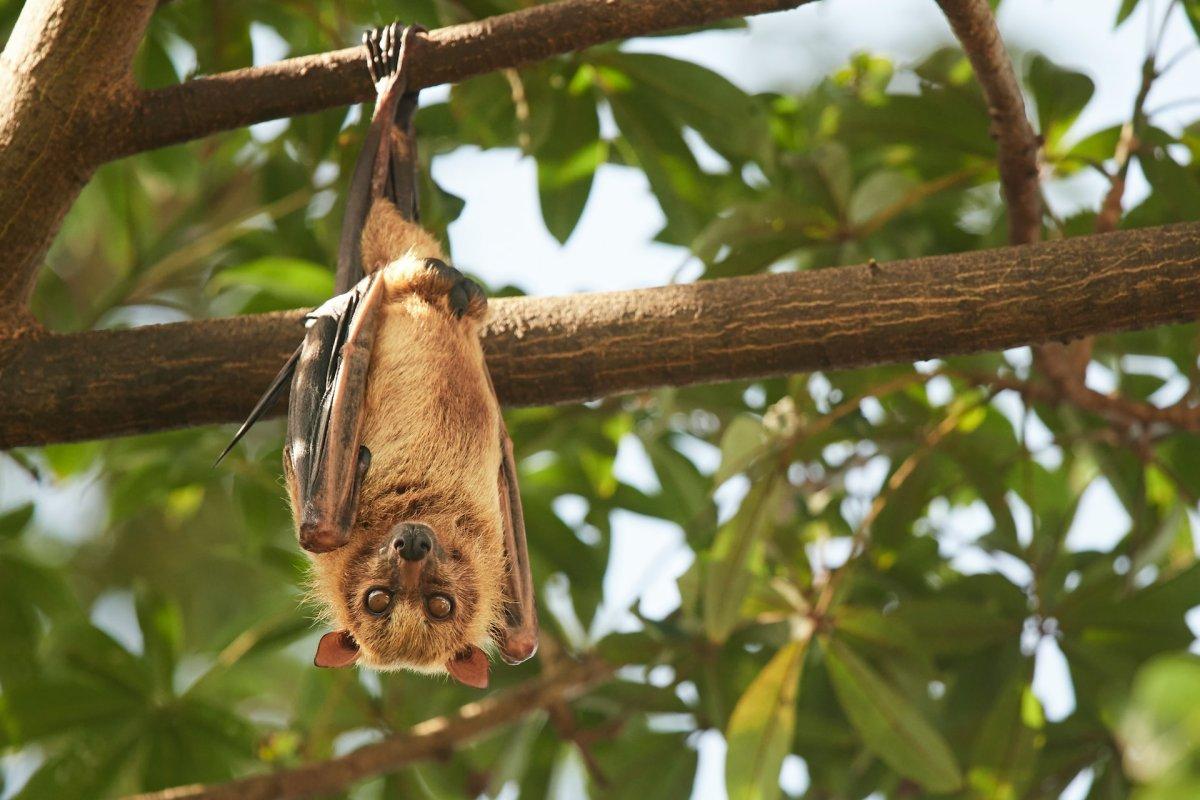
- Name: Indian flying fox
- Scientific name: Pteropus medius
- Conservation status:
The Indian flying fox, also known as the greater Indian fruit bat, is a large species of flying fox native to the Indian subcontinent, as well as the Maldives and Nepal. It lives in large colonies on open tree branches, and can easily be seen around temples or in urban areas.
This large bat is considered a pest in the Maldives, where it feeds on mangoes, guavas, and almonds, and is particularly destructive to the agricultural land.
3. Gray heron
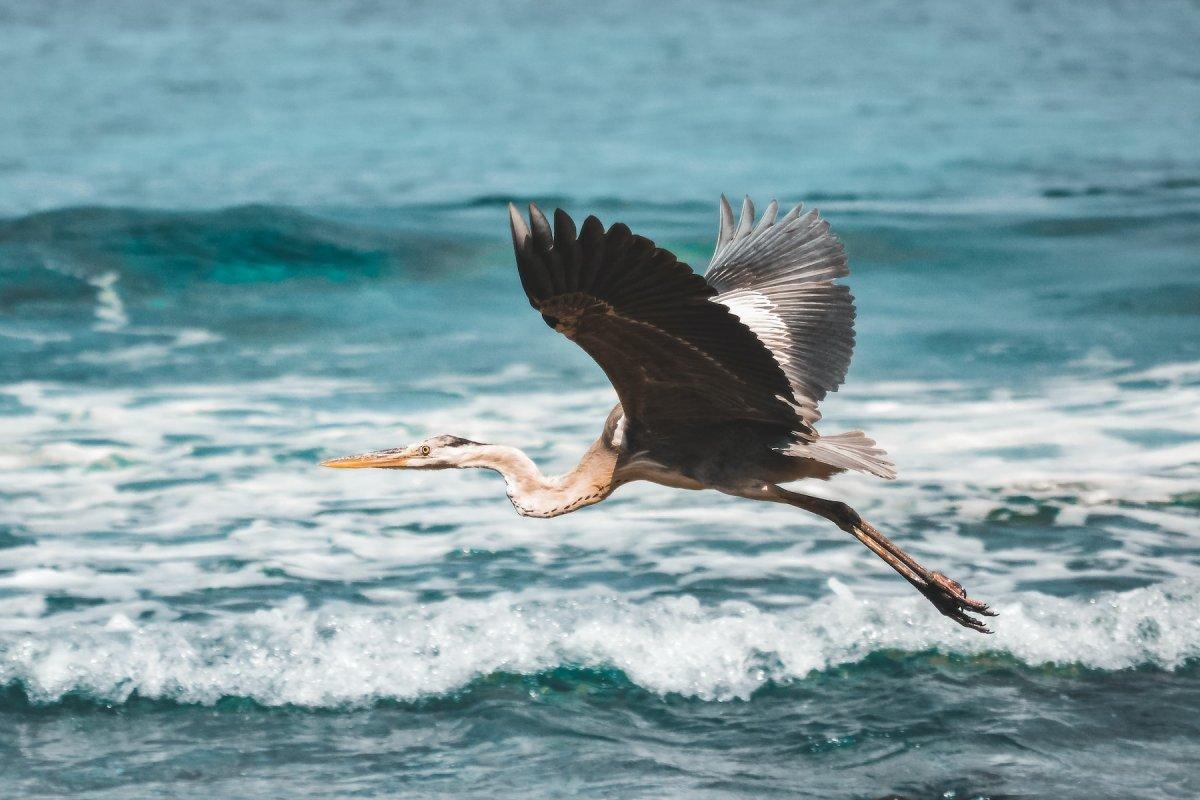
- Name: Gray heron
- Scientific name: Ardea cinerea
- Conservation status:
The gray heron is one of the species of migratory birds that can be found in the Maldives. It is a long-legged wading bird native to Europe, Asia, and parts of Africa. It has a white neck and a broad black stripe from its eye to its crest.
This heron inhabits the island bush and marshes of the Maldives. It is an apex predator that feeds on small mammals, insects, amphibians, and fish.
4. Oriental garden lizard
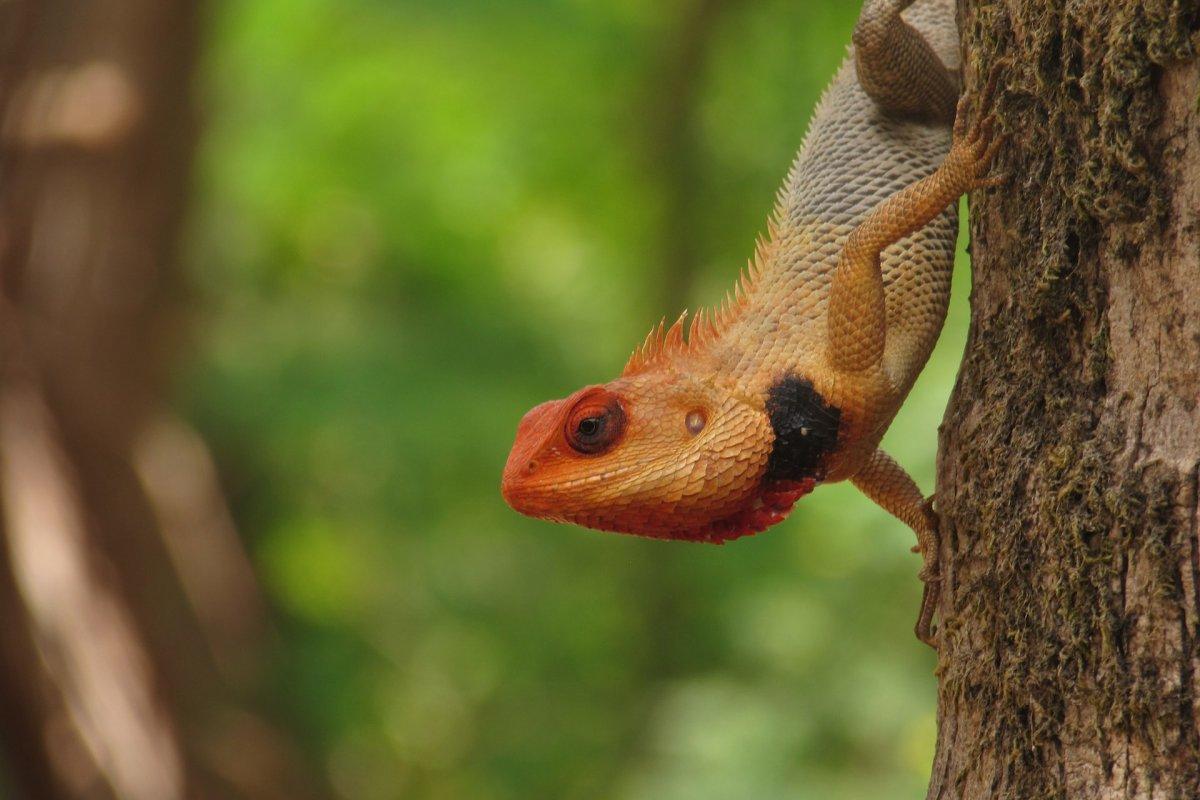
- Name: Oriental garden lizard
- Scientific name: Calotes versicolor
- Conservation status:
The oriental garden lizard, also known as the bloodsucker, the changeable lizard, or the common garden lizard, is a species of lizard widely distributed throughout southern and southeastern Asia, from the Indian subcontinent and the Maldives to the Malaysian Peninsula; however, it has been introduced to many other parts of the world.
This lizard is one of the few land reptiles that can be found in the Maldives, and it is very small.
5. Indian wolf snake
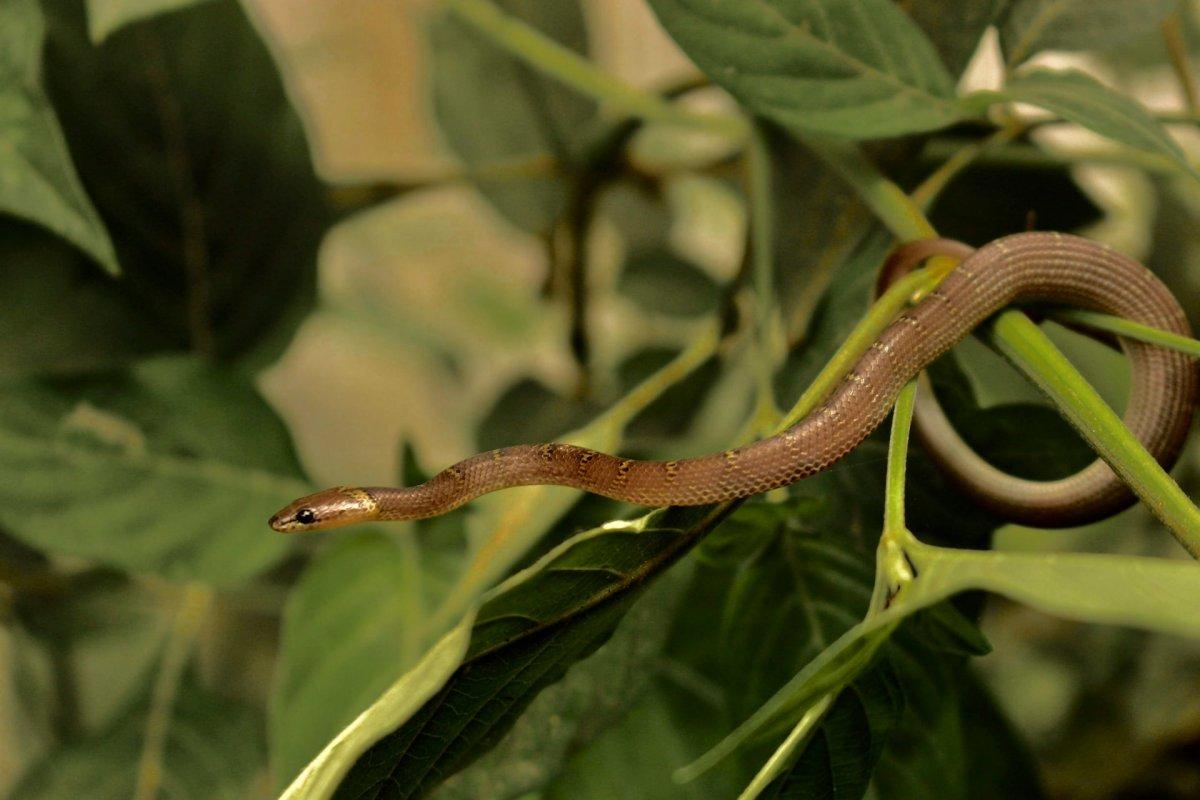
- Name: Indian wolf snake
- Scientific name: Lycodon aulicus
- Conservation status:
The Indian wolf snake is the largest and most dangerous species of snake you could encounter in the Maldives. However, although it has very large fangs and its bite can be very painful, it is not venomous; should you get hurt, there is usually no need for medical assistance.
This snake is nocturnal and can feign death in order to avoid being chased by predators or to lure potential prey. If cornered, it does not hesitate to defend itself and can be pretty aggressive.
6. Blacktip reef shark
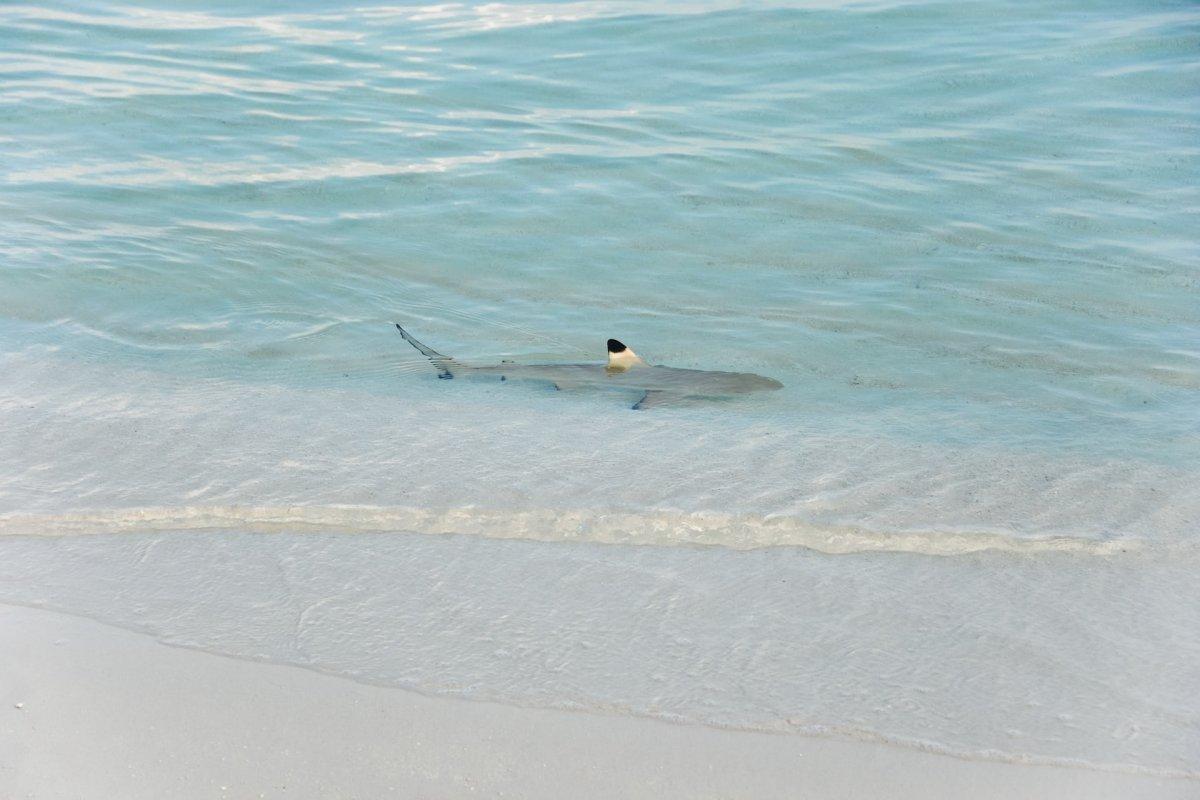
- Name: Blacktip reef shark
- Scientific name: Carcharhinus melanopterus
- Conservation status:
The blacktip reef shark is one of the wonderful creatures you will find off the coast of Maldives. It is one of the most abundant and widespread species of shark inhabiting the coral reefs of the Pacific and Indian Oceans but is considered vulnerable to extinction nonetheless, mostly due to its low reproductive rate and overfishing.
This shark usually attains a length of 1.6 m / 5.2 ft, has extremely small territories, and stays very loyal to a specific site.
7. Whale shark
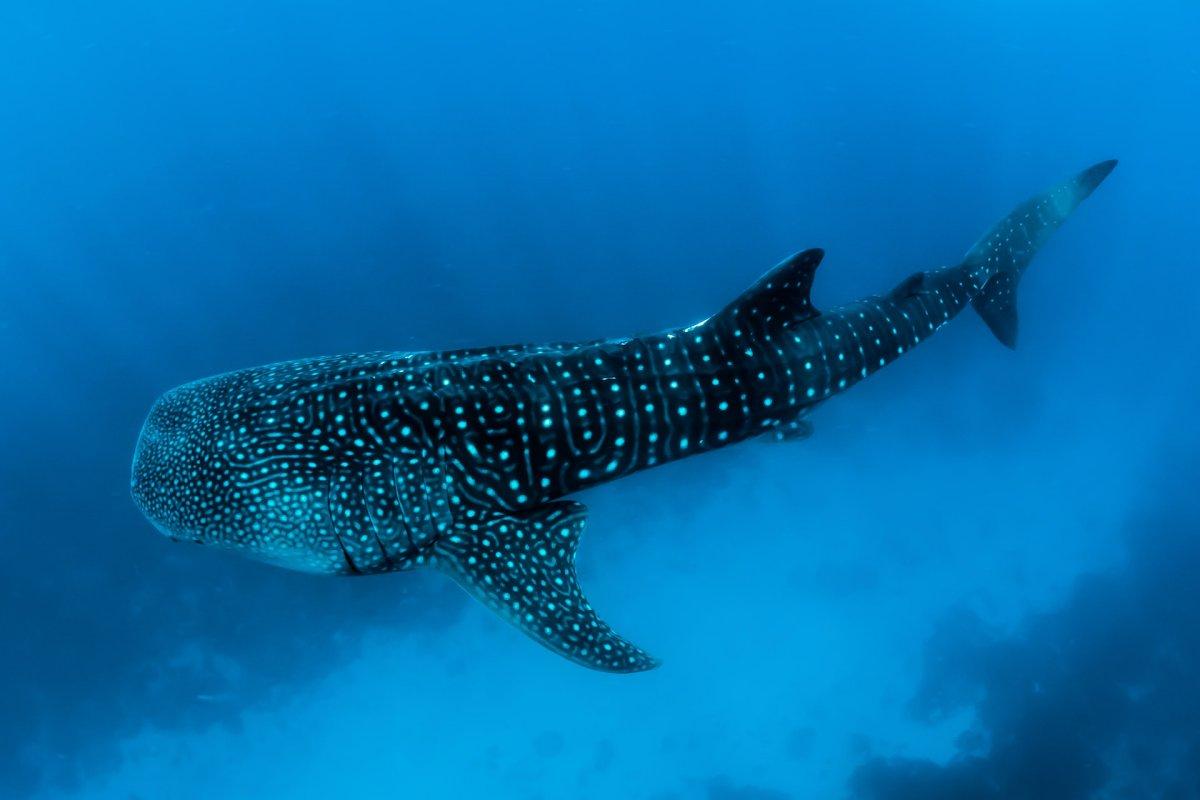
- Name: Whale shark
- Scientific name: Rhincodon typus
- Conservation status:
The whale shark is definitely the most impressive animal you can find in the Maldivian waters. Not only is it the largest fish in the world, but it is also by far the largest non-mammalian vertebrate.
This shark can be found in tropical, open waters at temperatures above 21 °C / 70 °F. It is a filter feeder that largely feeds on plankton and small fishes, and is not a threat to humans whatsoever.
8. Giant oceanic manta ray
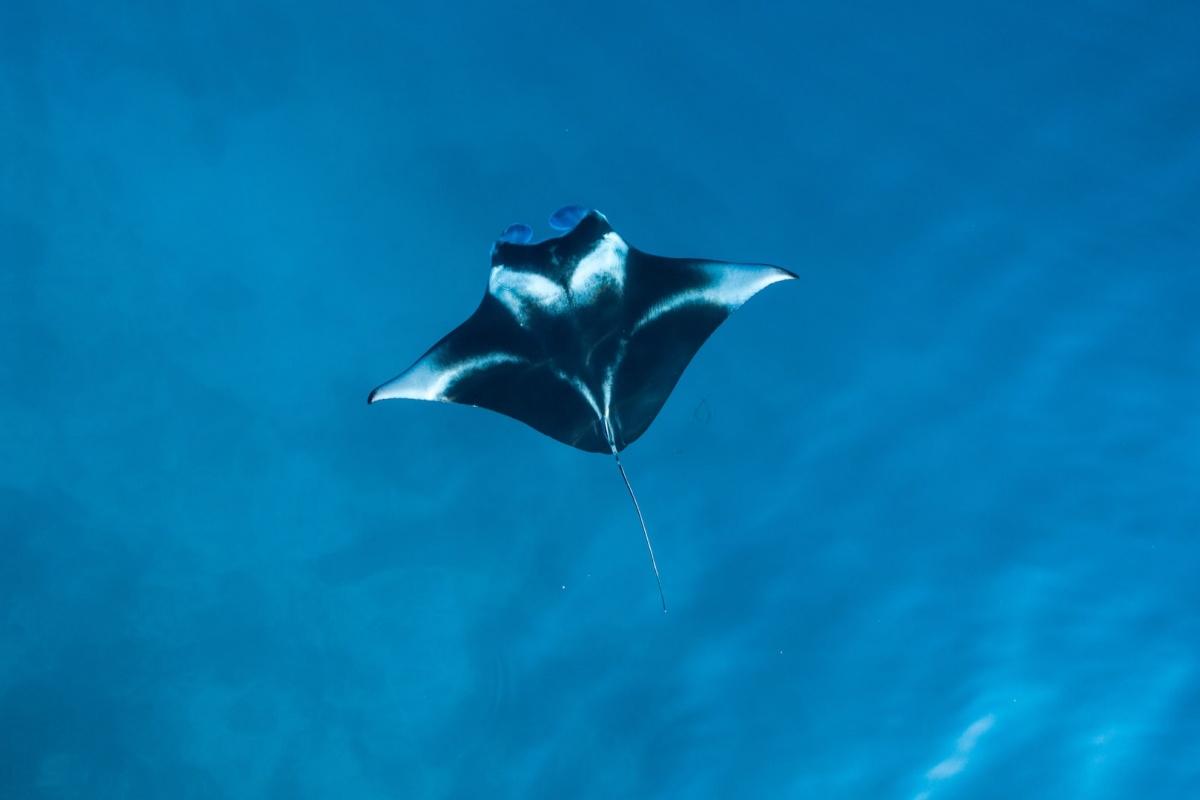
- Name: Giant oceanic manta ray
- Scientific name: Mobula birostris
- Conservation status:
Although the whale shark is particularly impressive and large, the giant oceanic manta ray, also known as the oceanic manta ray or the giant manta ray, has nothing to be ashamed of: it is the largest type of ray in the world, can be found all around tropical and subtropical waters of the planet, and can reach weights of up to 3,000 kg / 6,600 lb!
9. Leatherback sea turtle
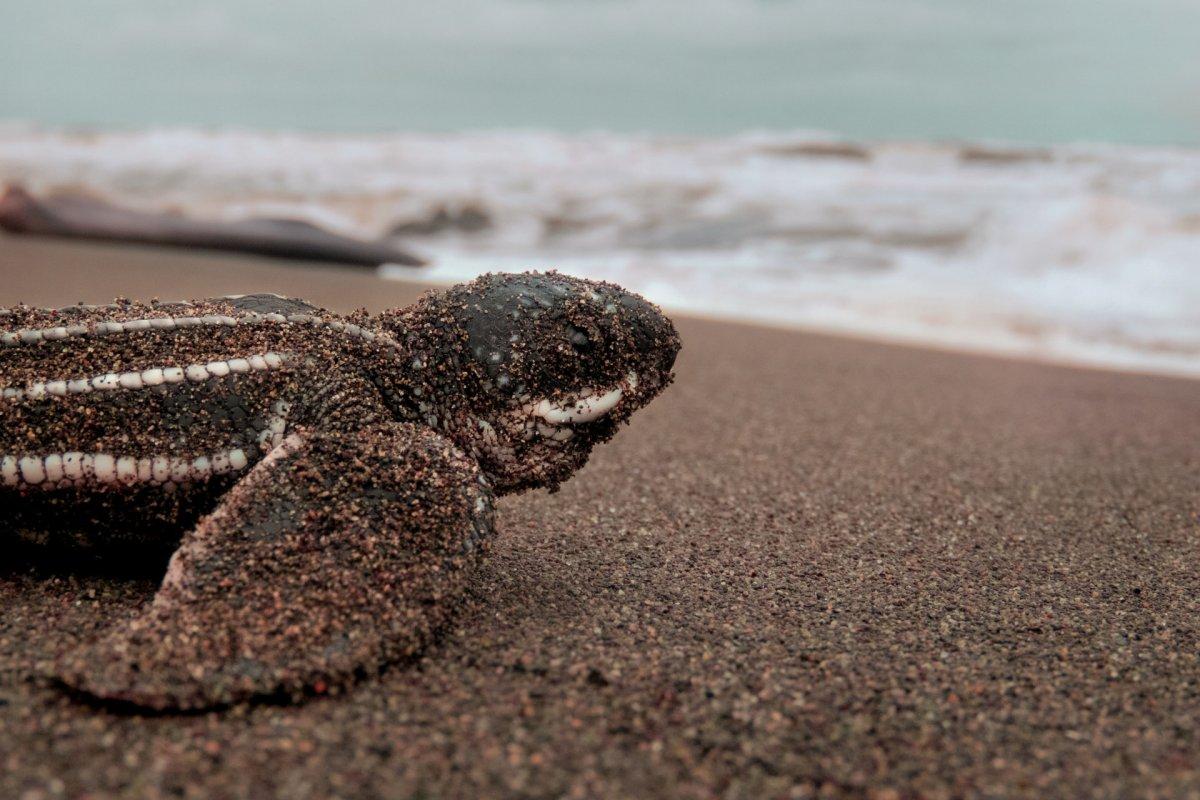
- Name: Leatherback sea turtle
- Scientific name: Dermochelys coriacea
- Conservation status:
Are you impressed yet with what Maldivian wildlife has to offer? Well, I have another incredible animal for you: the leatherback sea turtle!
Also known as the leathery turtle, the lute turtle, or simply the luth, this turtle species particularly like Maldivian beaches to lay its eggs. It is an animal of all records, being the largest of all turtles and the heaviest non-crocodilian reptile. It gets its name from its lack of a bony shell and is covered instead by leather-like skin.
10. Yellow-bellied sea snake
- Name: Yellow-bellied sea snake
- Scientific name: Hydrophis platurus
- Conservation status:
If you ever come across a sea snake, anywhere in the world, you should just run. These snakes are the most venomous and dangerous of all, but they can rarely be encountered on land.
In Maldives, if you are (un)lucky, you could stumble across a yellow-bellied sea snake, washed ashore on the beach. I doubt you would do that, but never approach it or pick it up, as its venom is particularly potent and can cause vomiting, paralysis, and even death!
11. Asian black-spined toad
- Name: Asian black-spined toad
- Scientific name: Duttaphrynus melanostictus
- Conservation status:
The Asian black-spined toad, also known as the Javanese toad, the black-spectacled toad, the common Sunda toad, or the Asian toad, is a species of toad widely distributed in southern and southeastern Asia and can be found on most Maldivian islands, contrary to the Sri Lanka bullfrog, which is only native to some small islands.
This toad can grow to around 20 cm / 8 in long, and breeds in slow-flowing and still rivers.
12. Saltwater crocodile
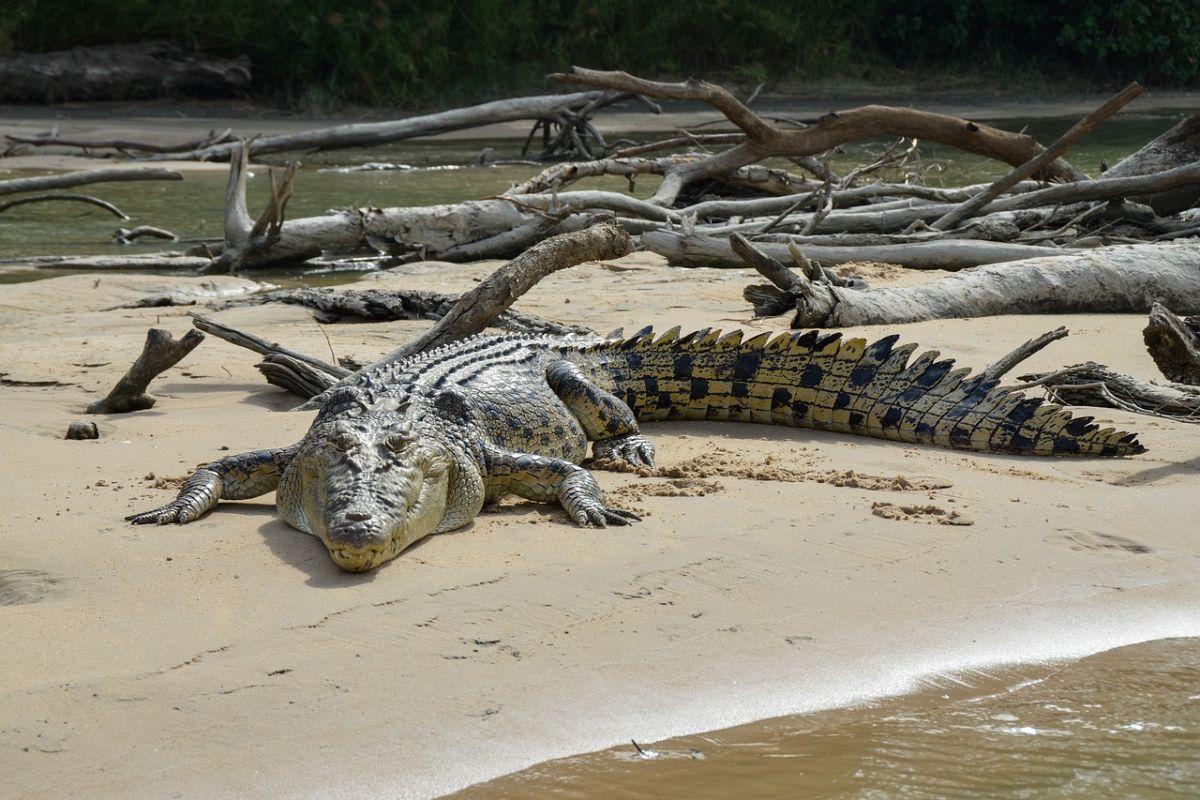
- Name: Saltwater crocodile
- Scientific name: Crocodylus porosus
- Conservation status:
Believe it or not, no, we are not done with incredible, large animals in the Maldives. Some specimens of saltwater crocodiles have been recorded in some small, inhabited islands and stay in marshy areas.
Also known as the saltie, the marine crocodile, the sea crocodile, the Indo-Pacific crocodile, or the estuarine crocodile, this reptile is the largest of all. It can reach outstanding lengths of up to 6.3 m / 21 ft, and weights of up to 1,300 kg / 2,900 lb!
13. White-spotted supple skink
- Name: White-spotted supple skink
- Scientific name: Riopa albopunctata
- Conservation status:
The white-spotted supple skink is also one of the few land reptiles that can be found in the Maldives. It can also be found in Indochina, Malaysia, Nepal, Bangladesh, India, and Vietnam.
This skink is terrestrial and insectivorous and lives in the tropical parts of Asia. It has weak limbs and a short, obtuse snout. While it is rufous or pale brown above, its sides are closely dotted with black, and it gets its name from the sides of its neck and anterior parts of the body, all spotted in white.
14. Lesser frigatebird
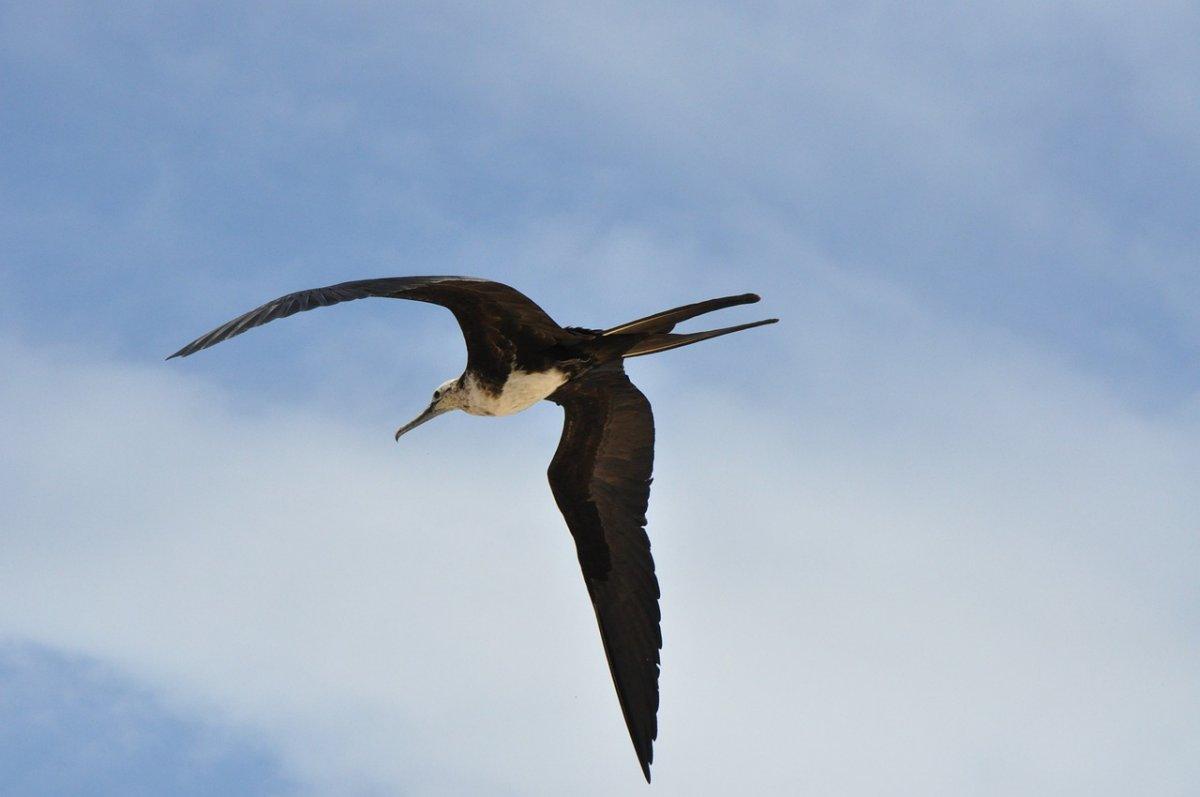
- Name: Lesser frigatebird
- Scientific name: Fregata ariel
- Conservation status:
The lesser frigatebird is a migratory bird that seasonally flies to the Maldives. As its name implies, it is the smallest species of the frigatebird family, with a length of about 75 cm / 30 in. It inhabits subtropical and tropical waters across the Pacific and Indian Oceans, as well as the Atlantic coast of Brazil.
Male lesser frigatebirds have large, red gular sacs which are used to attract a mate.
15. White tern
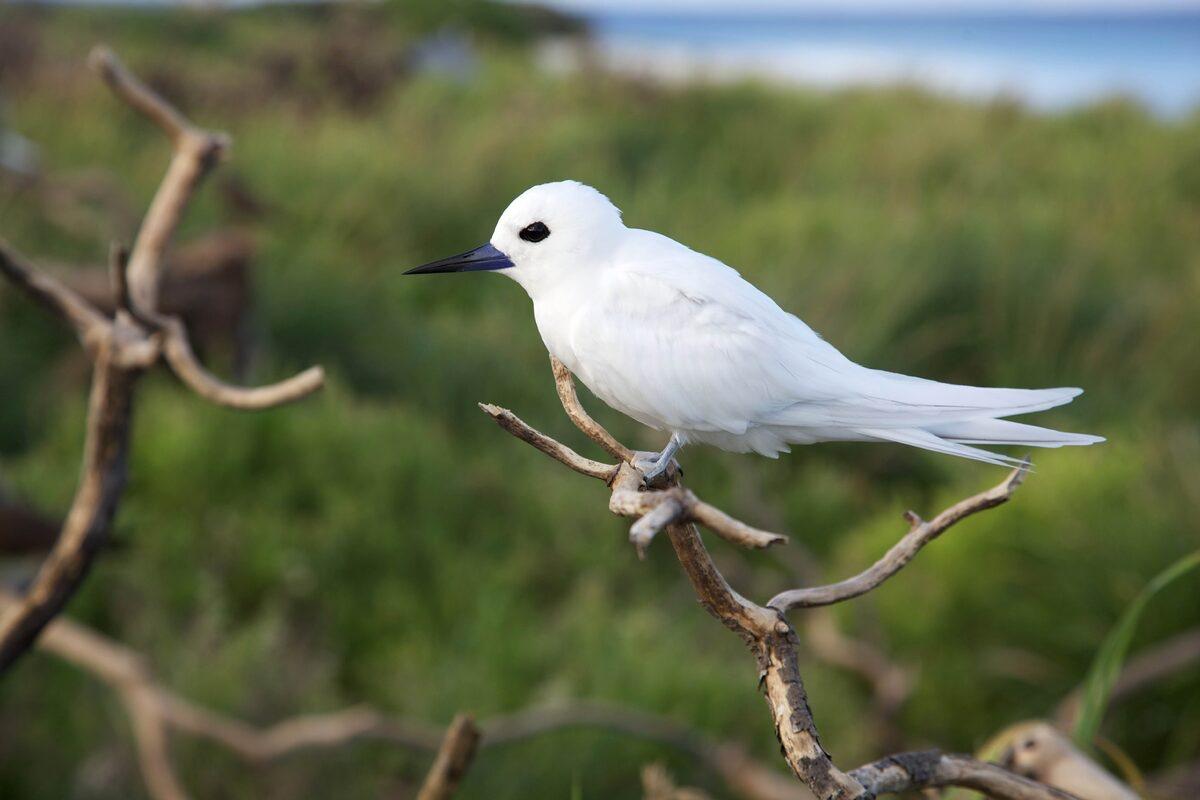
- Name: White tern
- Scientific name: Gygis alba
- Conservation status:
In some of the southern islands of the Maldives, you may find a white tern, due to the rich habitats of these areas. Also known as the angel tern, the fairy tern, or the white noddy, this bird has entirely white plumage with a long, black bill.
The white tern lays its eggs on bare, thin branches without a nest, which is what it is known for: other terns tend to nest on the ground, and even its closest relatives construct a nest.
16. Giant moray
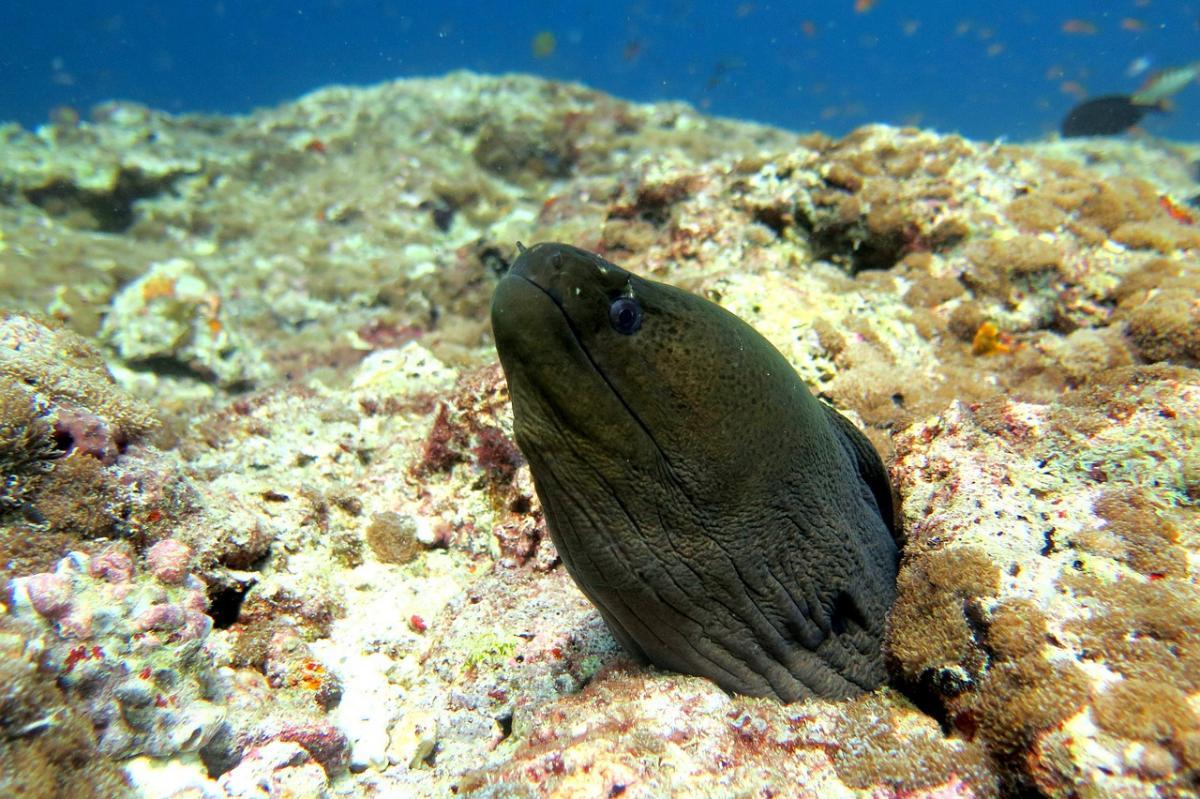
- Name: Giant moray
- Scientific name: Gymnothorax javanicus
- Conservation status:
You have guessed it, the giant moray is the largest species of moray eels, but the slender giant moray is actually the longest one. It can be found in the tropical waters of the world, from eastern Africa to Fiji and Australia, and is usually brownish.
You will find the giant moray off the coast of Maldives, in coral reefs or lagoons. This fish is known to stay hidden in crevices during the day (at depths between 1 and 50 m / 3.3 and 164 ft), from where it strikes its prey.
17. Giant crab spider
- Name: Giant crab spider
- Scientific name: Heteropoda venatoria
- Conservation status:
If you are afraid of spiders, look away! We have one big specimen here. Also known as the cane spider, the giant crab spider is a large species of spider native to tropical parts of the world and introduced to many subtropical areas.
It is an insectivore that feeds on a wide range of butterflies and moths; instead of spinning webs, it captures its prey immediately and injects them with venom. It is often seen as a helper, feeding on a range of common pests, and it cannot survive in the cold, which is why it can be found in households and barns.
18. Giant clam
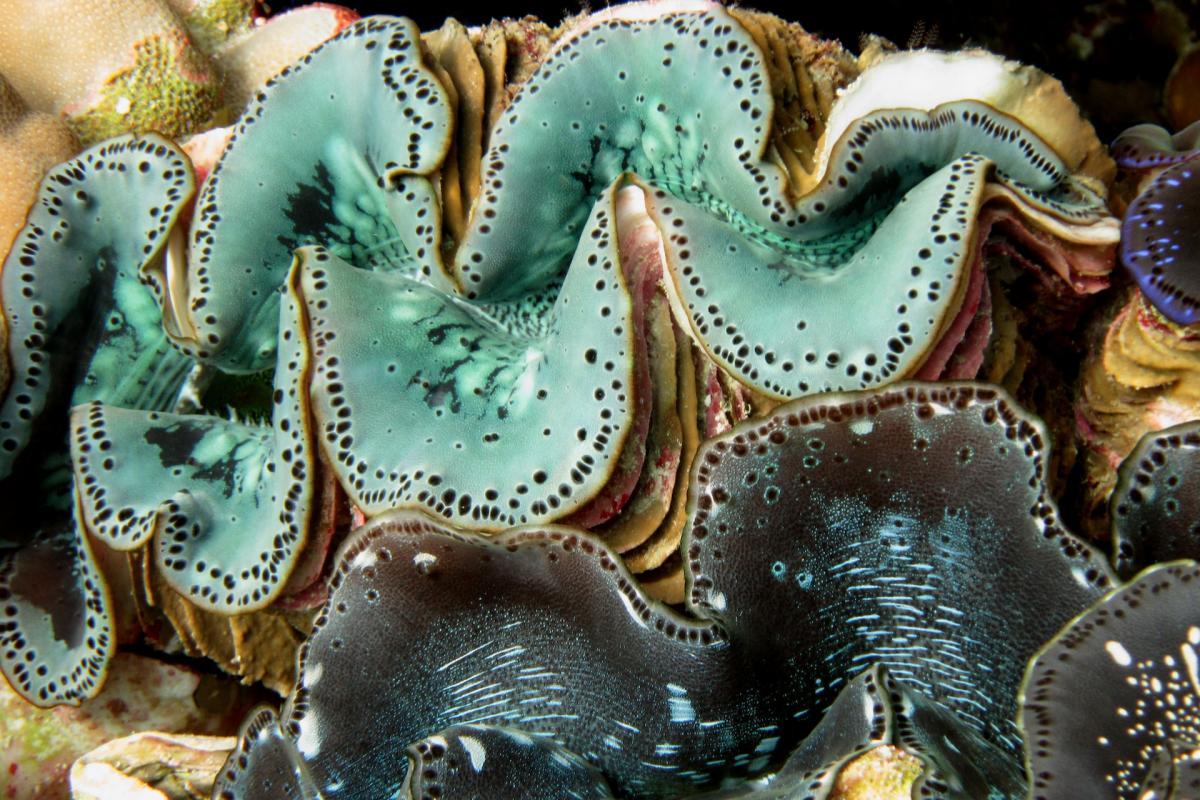
- Name: Giant clam
- Scientific name: Tridacna gigas
- Conservation status:
The giant clam is the largest bivalve mollusk in the world, reaching weights of more than 200 kg / 440 lb and lengths of 120 cm / 47 in. Its average lifespan in the wild is over 100 years!
This mollusk can be found off the shores of Maldives, but also throughout much of the Indian and Pacific Oceans. It lives in flay coral sand or broken coral, not deeper than 20 m / 66 ft usually.
—
So there you have them, these were my 18 wild animals in the Maldives. I hope you enjoyed this list and that you learned something new today.
In case you want to learn more about the Maldives wildlife, feel free to keep reading, as I still have lots of things to tell you about:
Endangered Animals of Maldives
This is definitely the saddest part of the list, but it is crucial to raise awareness. Because of this, let’s go through the list of endangered animals in Maldives.
Here are the animals in danger of extinction in Maldives.
- None
- Hawksbill turtle
- Great hammerhead
- Bowmouth guitarfish
- Oceanic whitetip shark
- Bottlenose wedgefish
- and 2 more…
- Spinetail devil ray
- Whale shark
- Pelagic thresher
- Blue whale
- Green turtle
- and 19 more…
To see the full list of endangered species in Maldives, head over to the International Union for Conservation of Nature’s Red List.
What is the National Animal of Maldives?
The national animal of Maldives is the yellowfin tuna.
The main economy of Maldives has always been fishing, and it still holds particular cultural importance within the country; because of this, it was chosen as the best emblem for the Maldives.
The yellowfin tuna also called “albacora” in Portugal and “albacore” in French, is one of the largest tuna species, reaching weights of up to 180 kg / 400 lb!
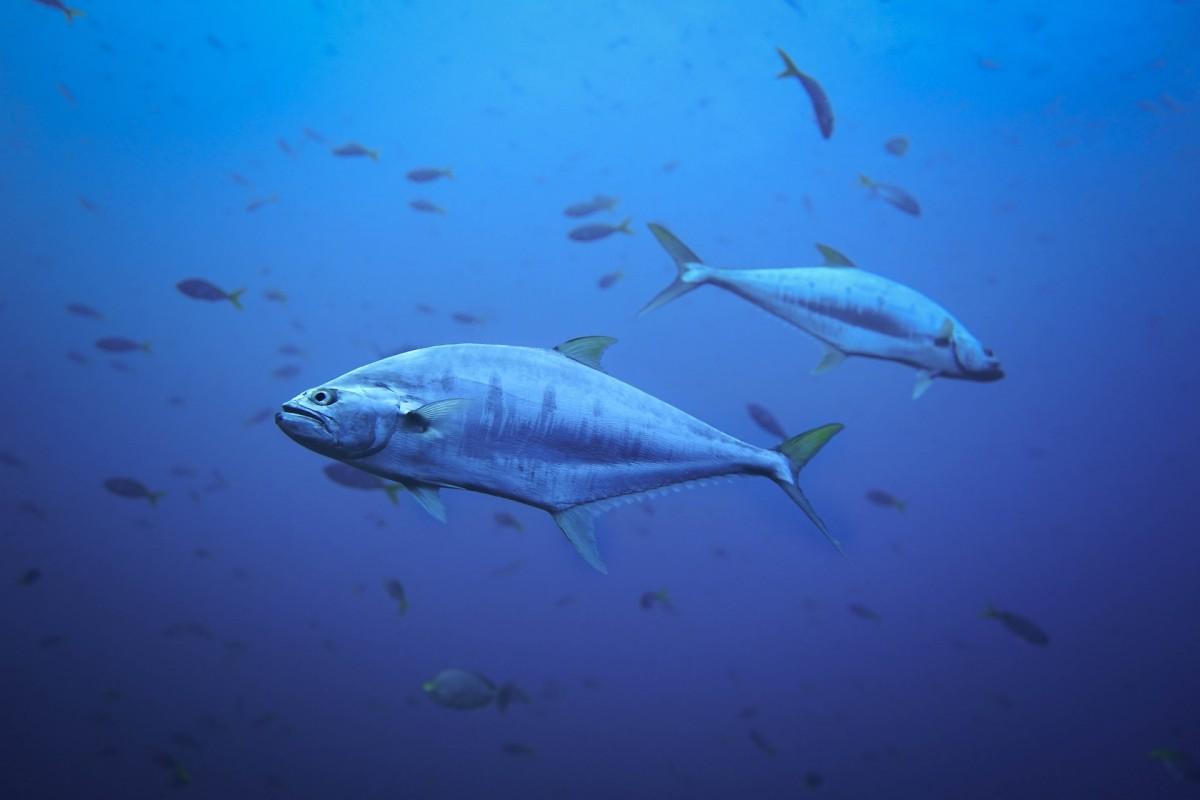
How Many Animals Native to Maldives?
What is the diversity of native animals in Maldives?
Let’s look at the total number of species of Chordata (mammals, birds, fishes, and reptiles).
Total number of animal species in Maldives: 1,334 (15,319 in total in South and Southeast Asia)
Are there snakes in Maldives?
There are definitely snakes in the Maldives, and they particularly love the archipelago, since it is the lowest country on Earth, with an average altitude of 1.5 m / 4.9 ft above sea level.
The only terrestrial snakes are the Indian wolf snake and the blind snake, both non-venomous and not particularly dangerous.
However, sea snakes are plentiful, and they are some of the most dangerous animals in Maldives. An example of a sea snake you can find there is the yellow-bellied sea snake.
Why are there no dogs in Maldives?
Well, there are dogs in the Maldives… but only sniffer specimens are used by the police.
In fact, dogs are banned from the archipelago! The main reasons for this are because it is against Muslim belief (where dogs are considered dirty, and the Maldives is a Muslim state), to remove noise problems, to avoid rabies, not to have stray dogs, to keep the environment clean and there is not enough space to properly accommodate dogs.
More About Animals in the World!
Loved these Maldives animal facts? Want to see what animals live in other countries?
Then check out these posts:
Or click here to see ALL the facts up on the blog! Spoiler alert: there’s A LOT of them.
Share the knowledge! Click on the buttons below to share information about these famous animals in Maldives with your friends, and help them learn more about the world 🙂
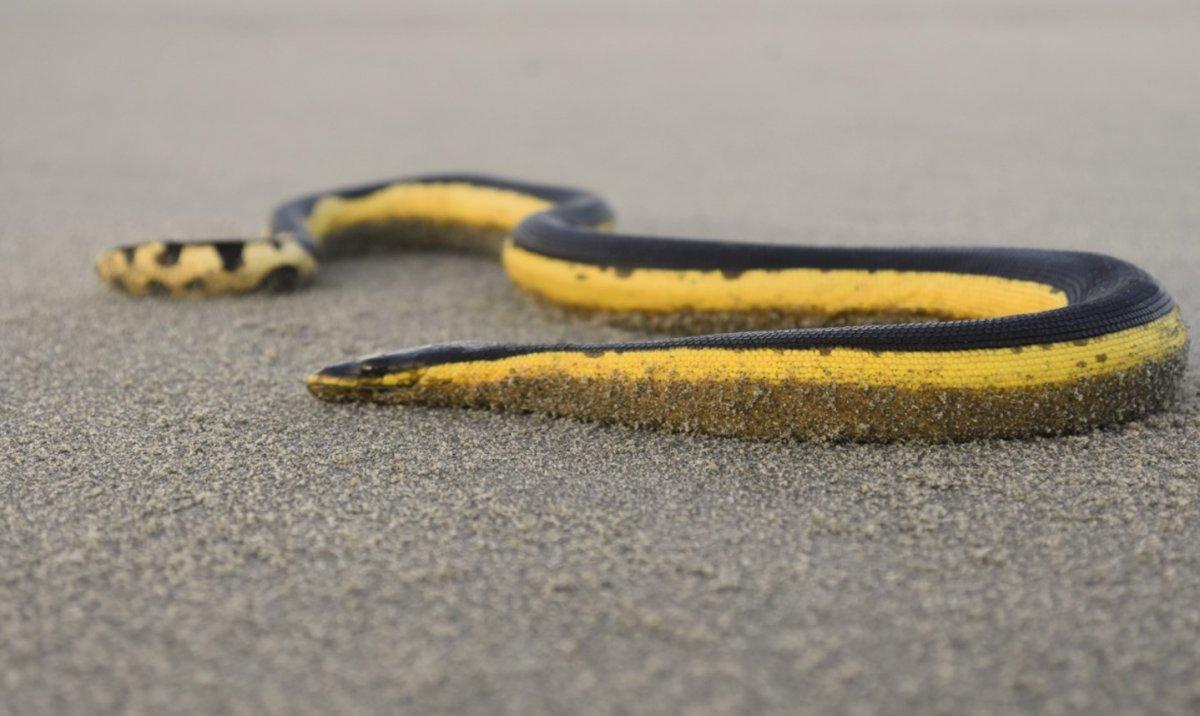
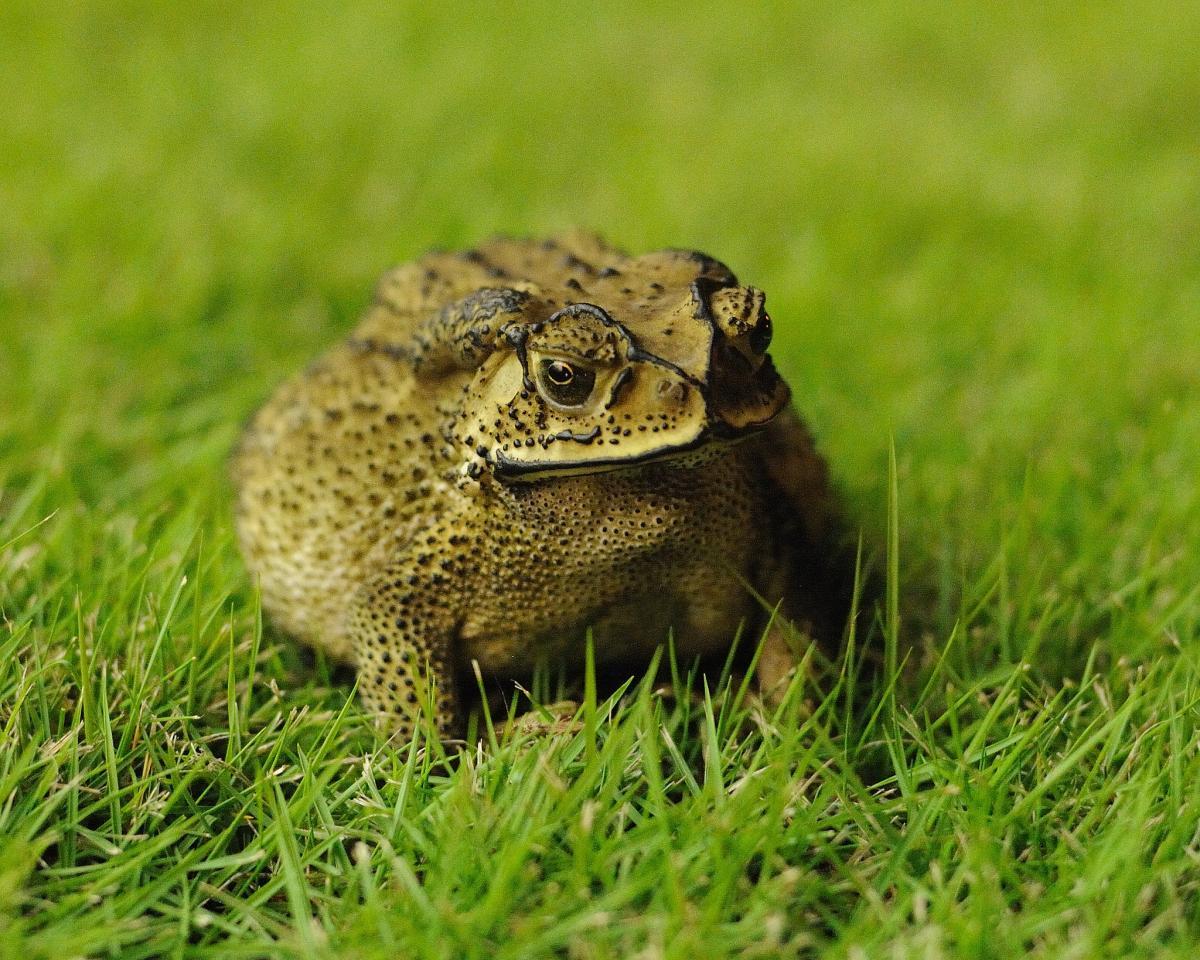
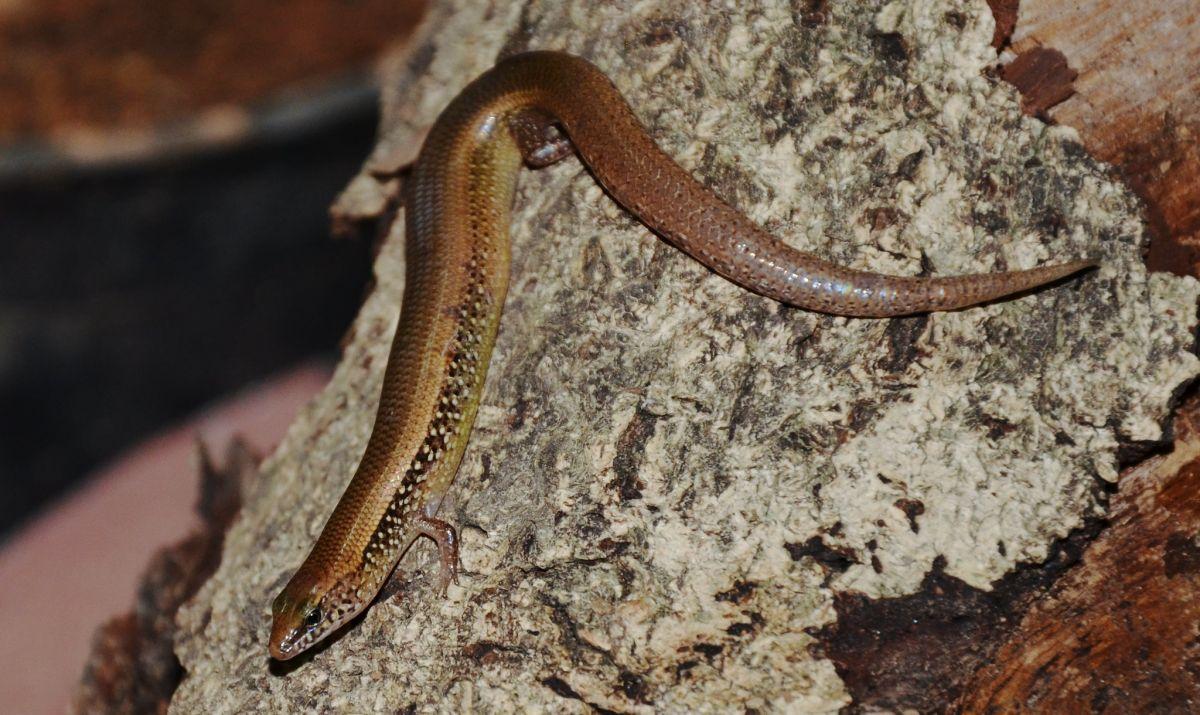

![24 Wild Animals in Portugal [Wildlife in Portugal]](https://www.kevmrc.com/wp-content/uploads/2022/11/24-wild-animals-in-portugal.jpg)
![15 Wild Animals in Honduras [Wildlife in Honduras]](https://www.kevmrc.com/wp-content/uploads/2022/08/15-wild-animals-in-honduras.jpg)
![12 Wild Animals in Iran [Wildlife in Iran]](https://www.kevmrc.com/wp-content/uploads/2022/06/12-wild-animals-in-iran.jpg)